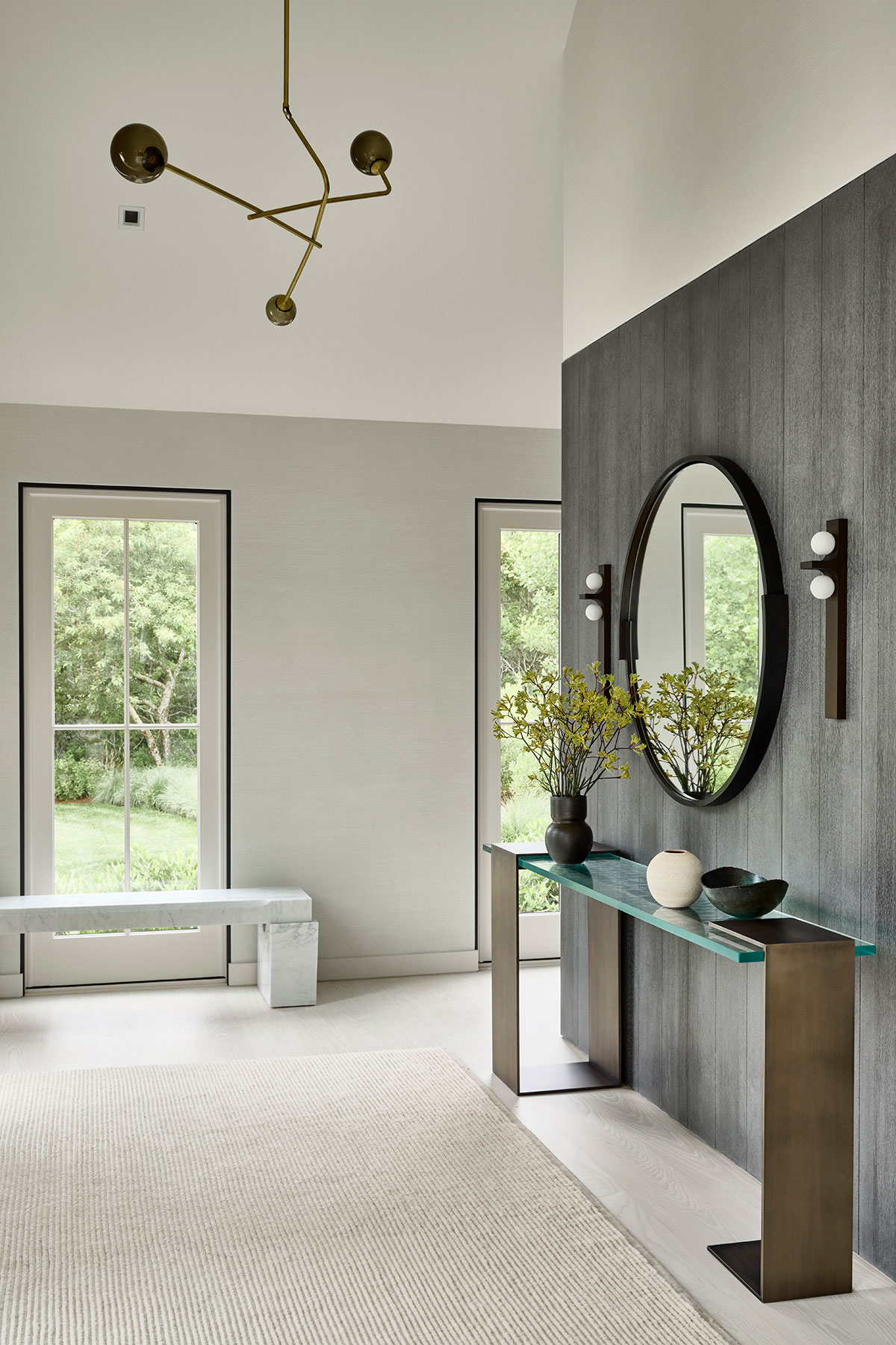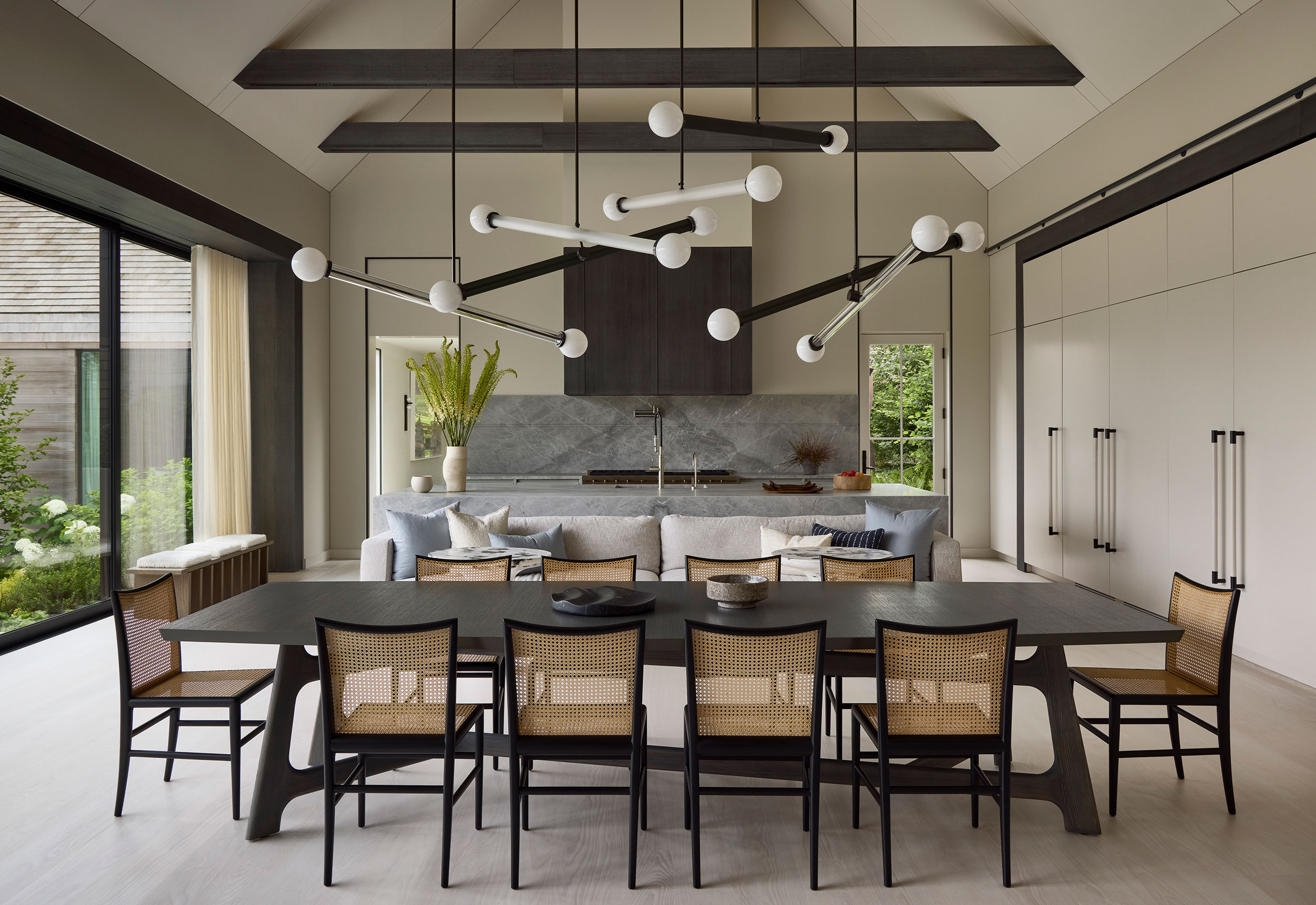Reveals Rundown
Wherever two surfaces or materials meet, there lies an opportunity for an architectural reveal to add illusion, depth, contrast, and purity of line to the design. A reveal can be used to obscure gaps, to delineate zones, to highlight the difference between materials, to give hierarchy to walls and ceilings, to conceal light sources, or even to integrate an HVAC or AV system.
They play with light and shadow, positive and negative space, and even our preconceived notions about ornamentation and decoration. Here, we’ve highlighted examples of the many uses for subtle but stunning architectural reveals, as applied to Workshop/APD projects.
In our architecture, we do a lot of tracing of lines, whether that’s a reveal, or an inset portal around doors, or a division of ceiling planes, and we use that as a way to break large spaces into smaller, more visually compelling spaces. In the Courtyard House, the detailing has a grounding effect – the space becomes more digestible – easier to process, visually.
Along the sculptural stair of our Downtown Penthouse Duplex, reveals obscure the light source that illuminates each curve. When using light strips, placement is key to creating the look of an even wash across the wall’s surface. Adding these elements to the ceiling contributes to the gently curved staircase’s ethereal effect.
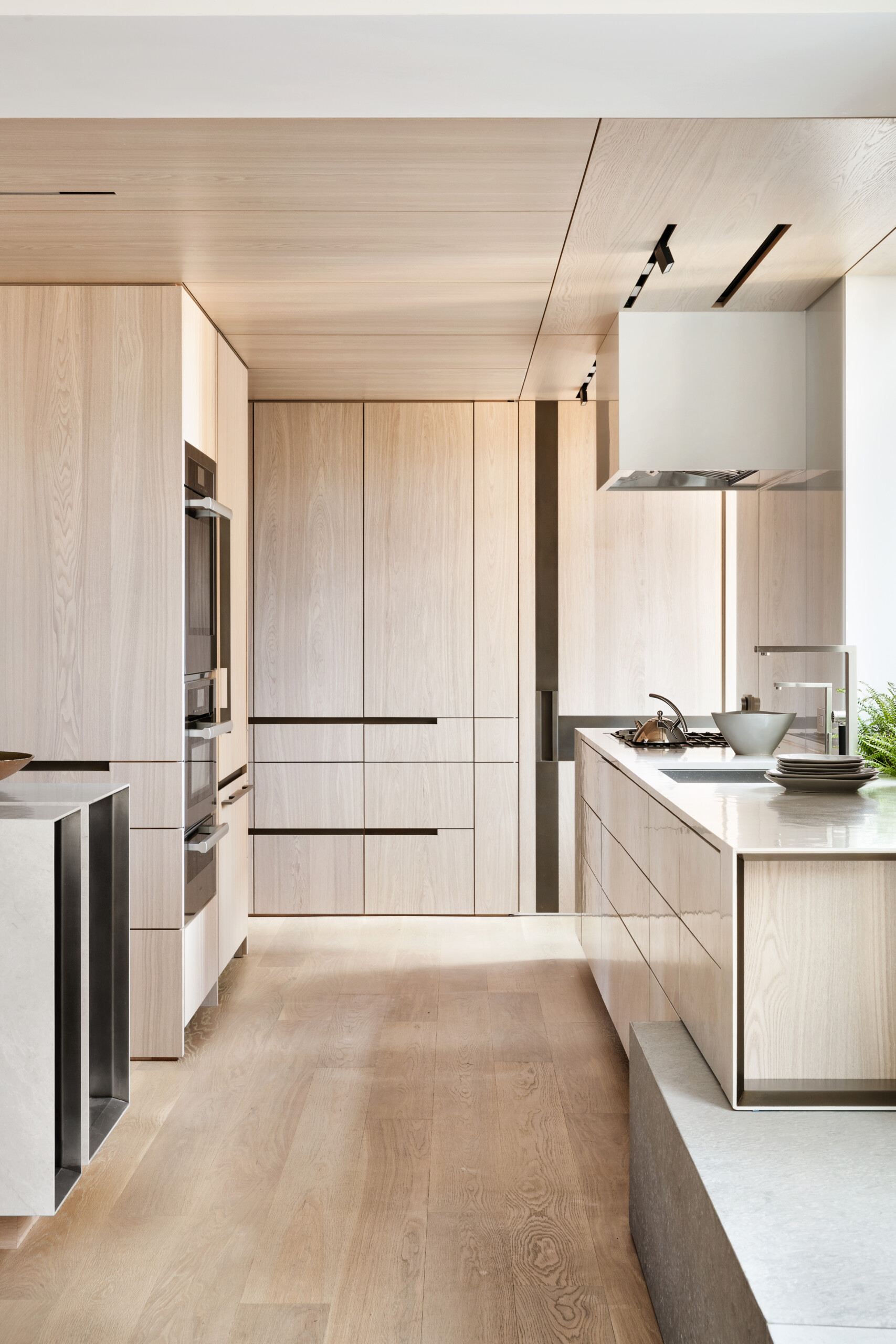
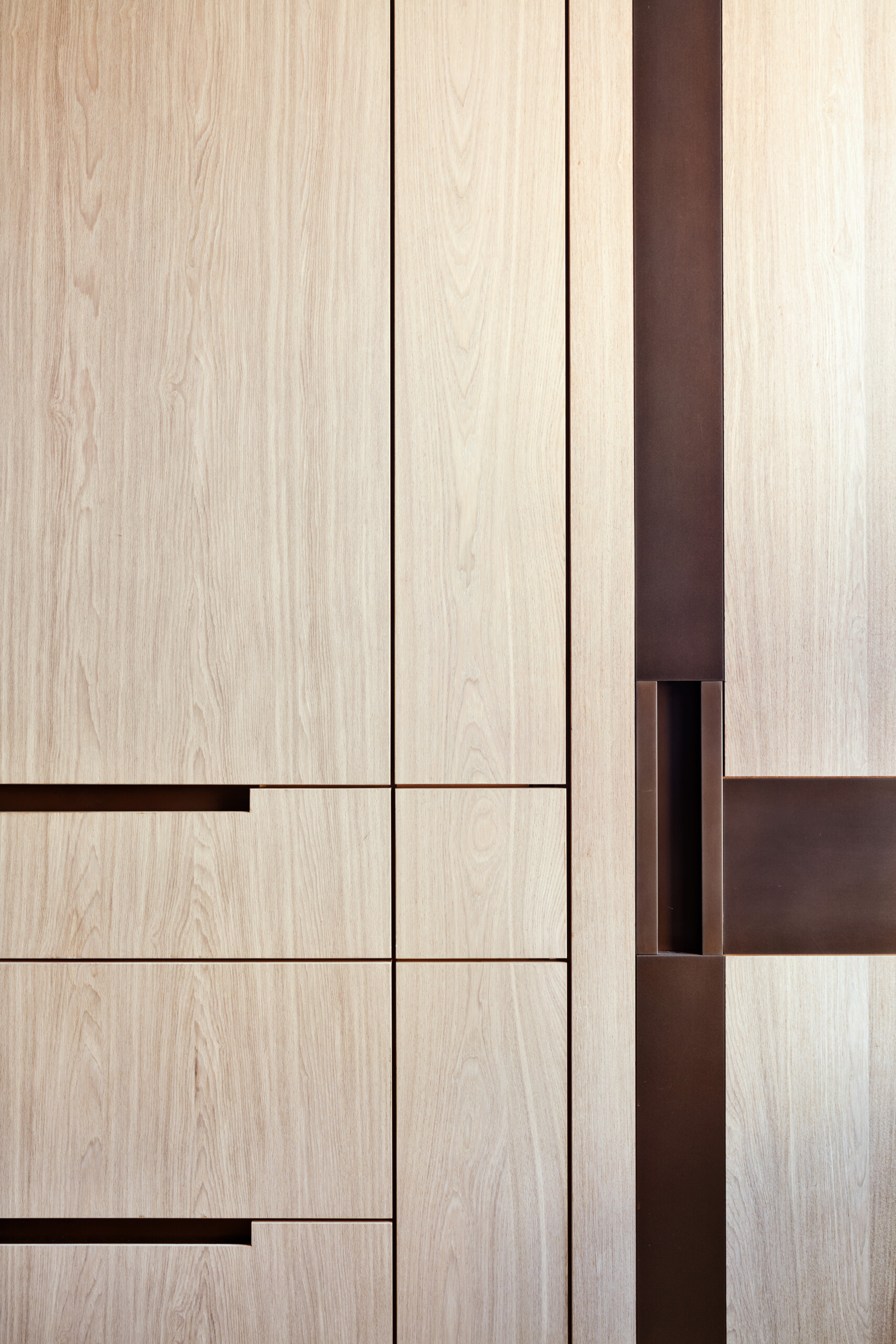
For an UWS kitchen created to disappear, gallery-like, into an art-filled apartment, thin reveals in the millwork help create an intentional, linear effect where cabinets blend together. Using these thin cut-outs can have the effect of hiding existing functional gaps in plain sight.
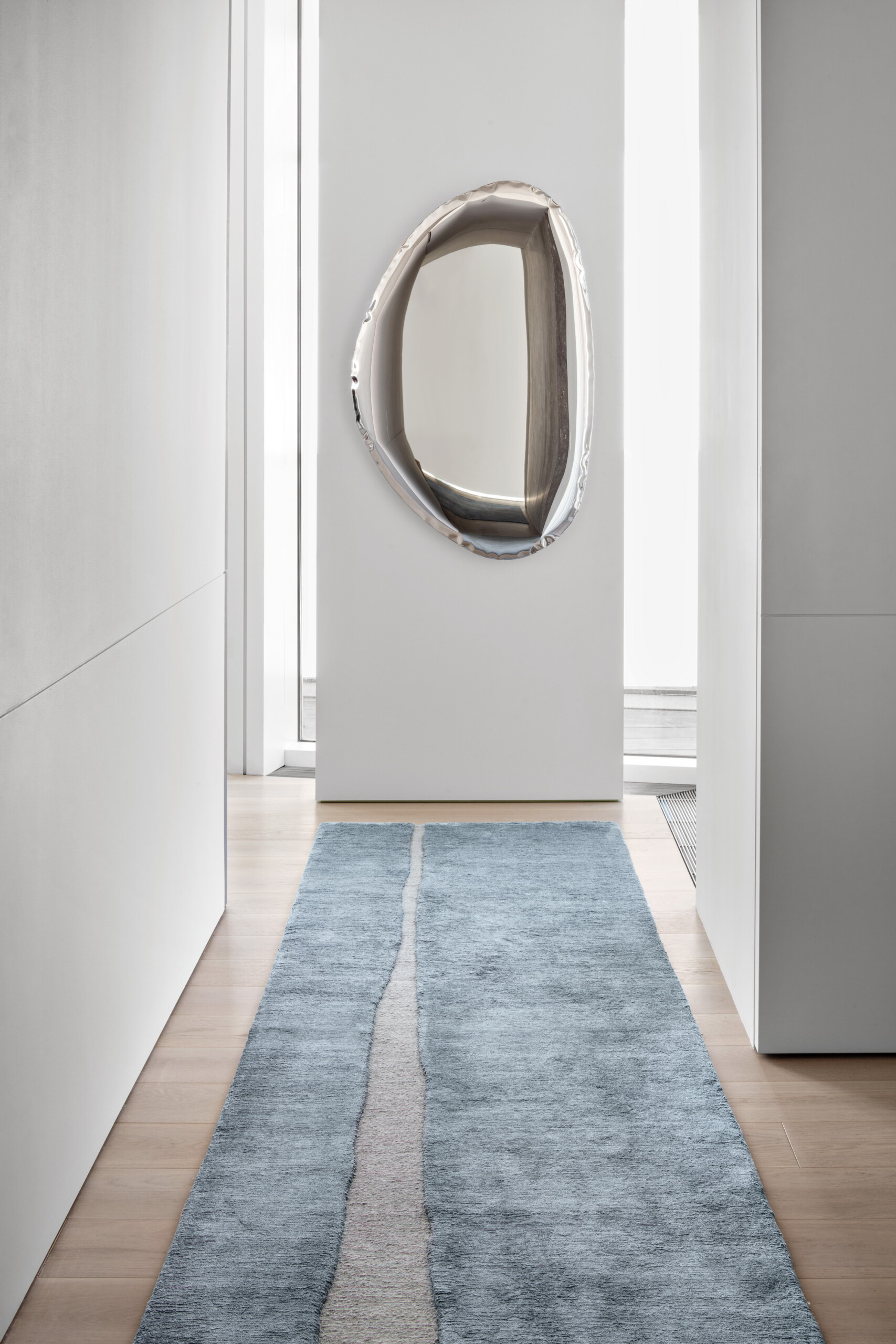
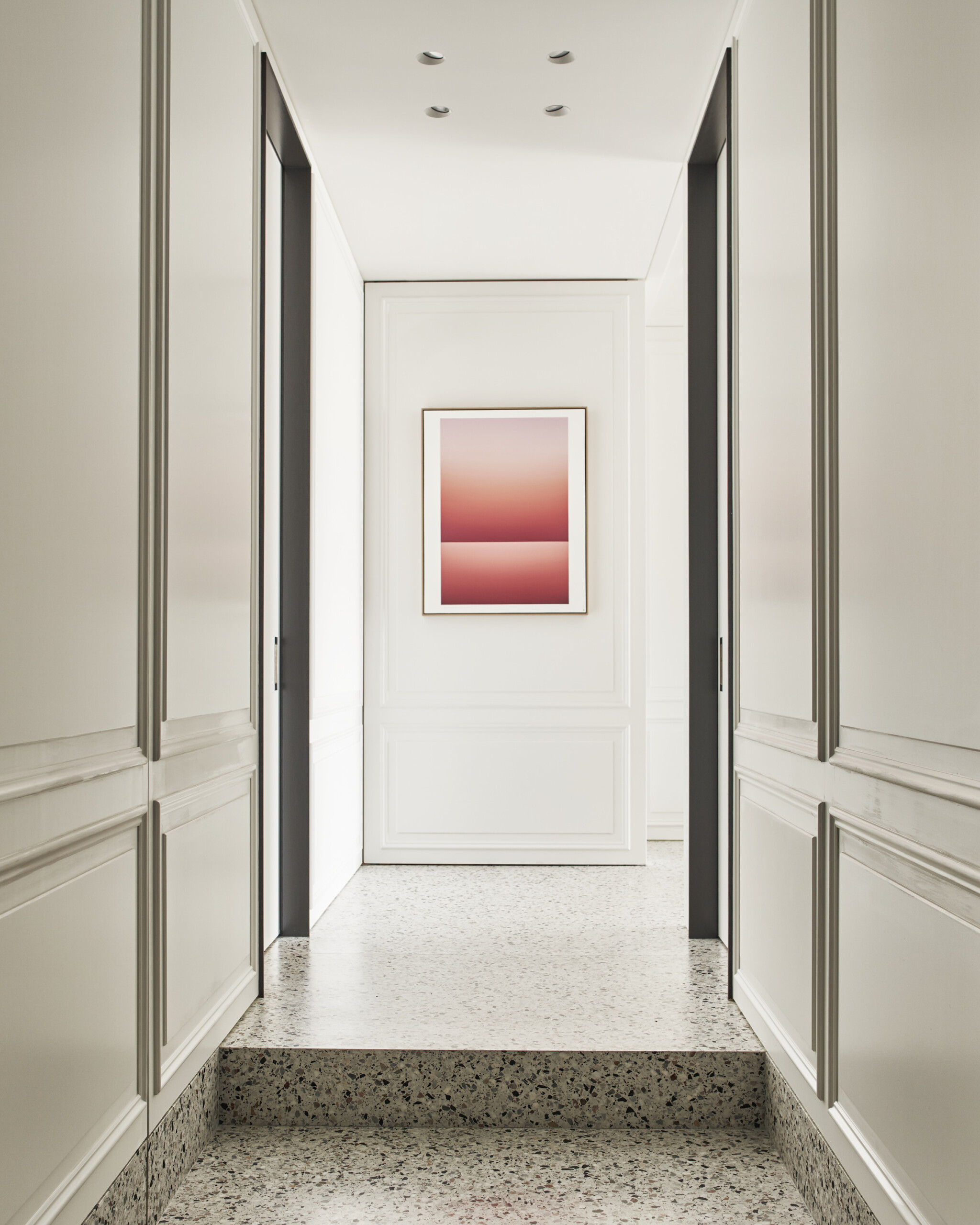
In ourPerry Street Pied-a-Terre, a slight gap along the floor creates the visual sensation of walls suspended in air. This “floating” effect not only adds hierarchy and interest, but can also grant forgiveness when walls are not plumb with the floor or ceiling. In the Classic Contemporary Apartment, this technique is applied to both the floor and ceiling, an elegant solution to a common issue in pre-way buildings.
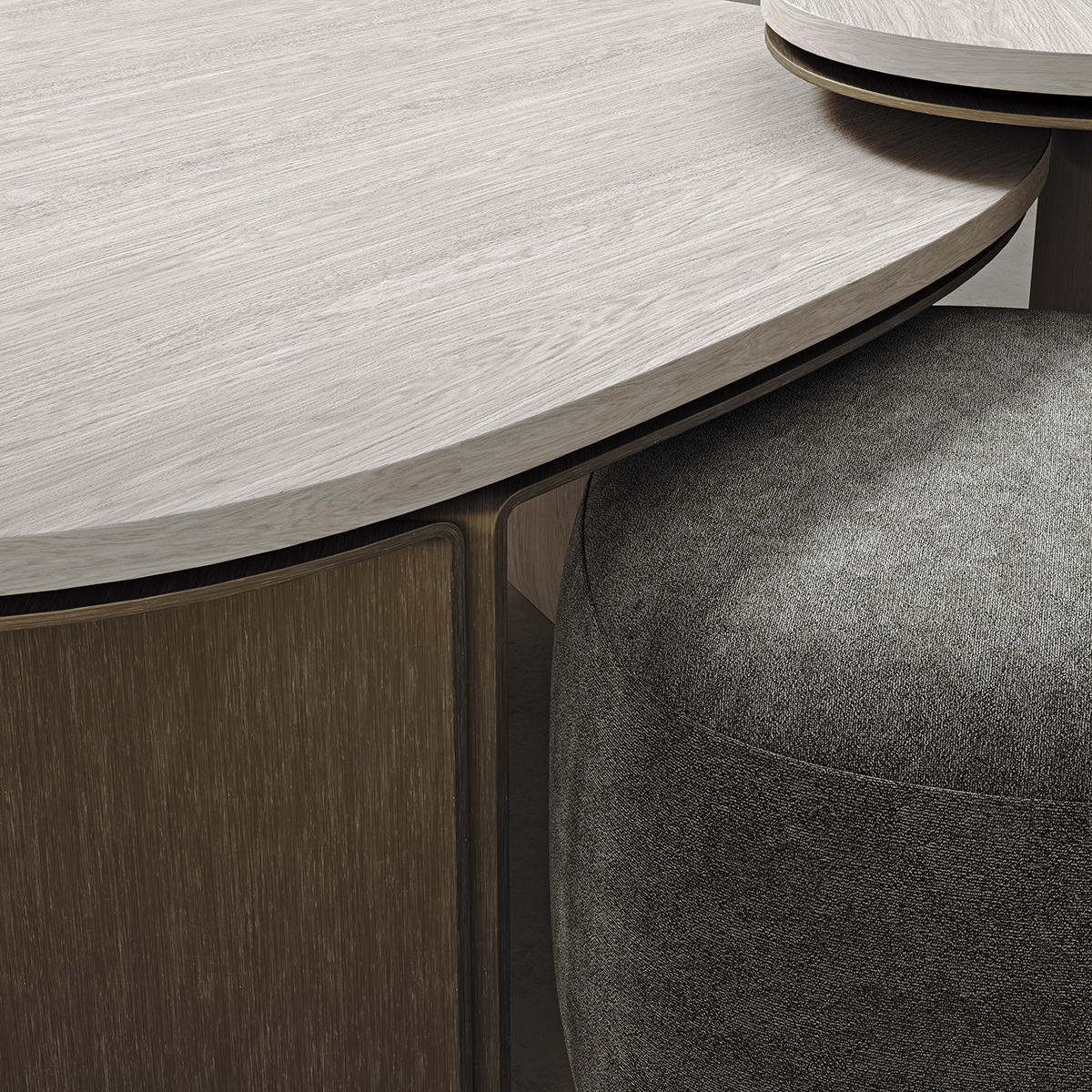
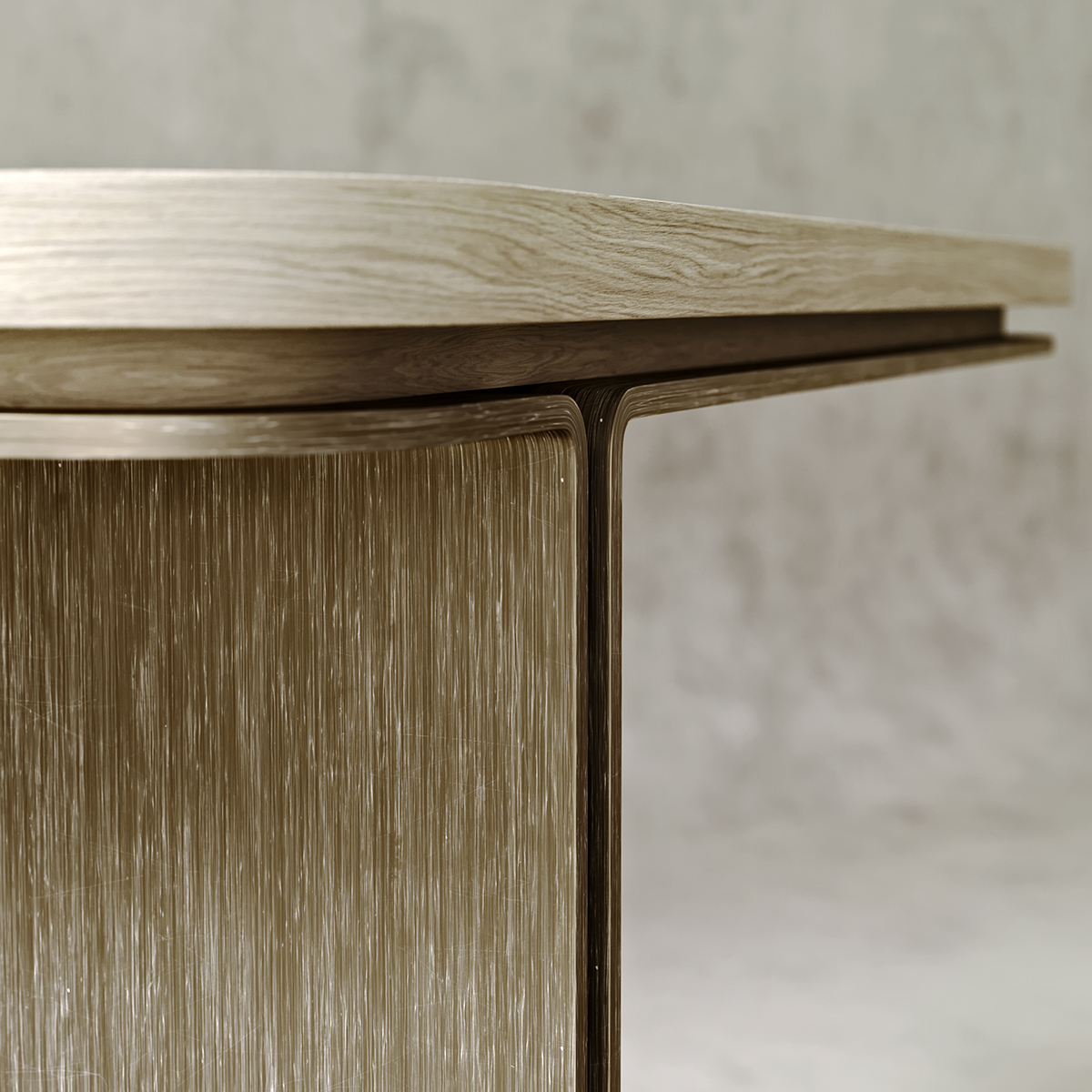
Reveals can also be used as a way of accentuating the contrast between different materials, as illustrated by our product collaboration with Desiron. Combining the principles of architectural and product design, we created exquisitely crafted, unique designs that speak to the ethos of both brands and showcase a shared reverence for materiality. Reveals between material planes add lightness and softness to the pieces, casting compelling shadows and adding view-throughs that can be enjoyed from 360-degrees.
